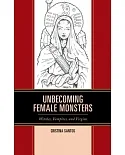Examines significant English clown traditions from the late medieval period through to the Renaissance, bringing to light their particular, buried cultural contexts and legacies. It begins with
an exploration of previously un-noted early representations of blackness in medieval psalters, cycle plays, and Tudor interludes, arguing that they are emblematic of folly and ignorance rather
than of evil. Subsequent chapters show how protestants at Cambridge and at court, during the reigns of Henry VIII and Edward, patronised a clownish, iconoclastic Lord of Misrule; look at the
Elizabethan puritan stage clown; and move on to a consideration of the Fool in King Lear. The study in general has far-reaching implications not only for our general understanding of English
clown types, but also their considerable role in defining social, religious and racial boundaries.





















